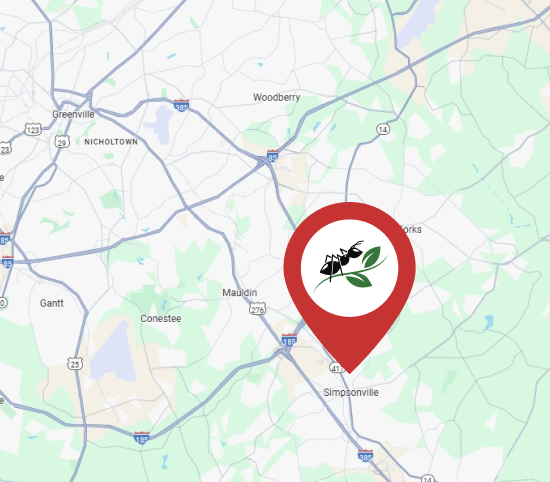Fire Ant Control Services in Simpsonville
At Action Pest Services, we understand the nuisance and danger that fire ants can pose to your property and loved ones. That is why we offer effective and reliable fire ant control services in Simpsonville, SC. Our team of experienced technicians is dedicated to eliminating fire ant infestations and providing long-term prevention strategies.

Ants vs. Fire Ants: How to Tell the Difference
Ants and fire ants may look similar at first glance, but understanding their distinct characteristics is crucial, especially when dealing with potential stings. While both belong to the Formicidae family, fire ants, particularly the red imported fire ant, possess unique traits that set them apart from regular ants.
- 1. Appearance: Regular ants come in various sizes and colors, but generally, they have a more uniform appearance, with shades of black, brown, or red. On the other hand, fire ants are reddish-brown in color, often with darker abdomens. They are noticeably larger, measuring around 1/8 to 1/4 inch in length.
- 2. Nests: Regular ants typically build their nests in soil, wood, or underground cavities. These nests are less conspicuous and scattered. In contrast, fire ants construct noticeable mounds made of loose soil, resembling tiny volcanoes. Their colonies can be extensive, with thousands of members, and these mounds are their characteristic trademark.
- 3. Behavior: While both ants and fire ants are generally industrious insects, fire ants are known for their aggressive behavior. When disturbed, they will sting repeatedly, causing painful reactions in humans and animals. Regular ants are usually more docile and less likely to sting unless their nest is under threat.
- 4. Stings: The most critical distinction lies in their stinging abilities. Regular ants can bite, but their bites are usually minor irritations. Fire ants, however, have potent stings that can result in burning sensations, redness, swelling, and even allergic reactions in some individuals.
- 5. Range: Regular ants are found worldwide, thriving in diverse ecosystems. Fire ants, on the other hand, are native to South America but have been accidentally introduced to various regions worldwide, particularly in North America, where they have become invasive pests.
Remember, fire ants can be hazardous, especially if you’re allergic to their venom. When in doubt, it’s best to avoid close contact and seek professional help if you suspect an infestation. Understanding the difference between ants and fire ants can help you take appropriate measures for your safety and pest control needs.
Why Your Neighbors Choose us
- Safe and Effective Treatments
- Expert Technicians
- Long-Term Prevention
- Customer Satisfaction
Very professional and knowledgeable.
Justin R.

Highly recommend this company
David T.

They are the best!
Audrey G.

Great service & great prices!
Denise W.

They Provide excellent customer service
Gina M.

I have used Action since 2016
Janet G.

The whole staff is very nice and very personable.
Jenn B.


